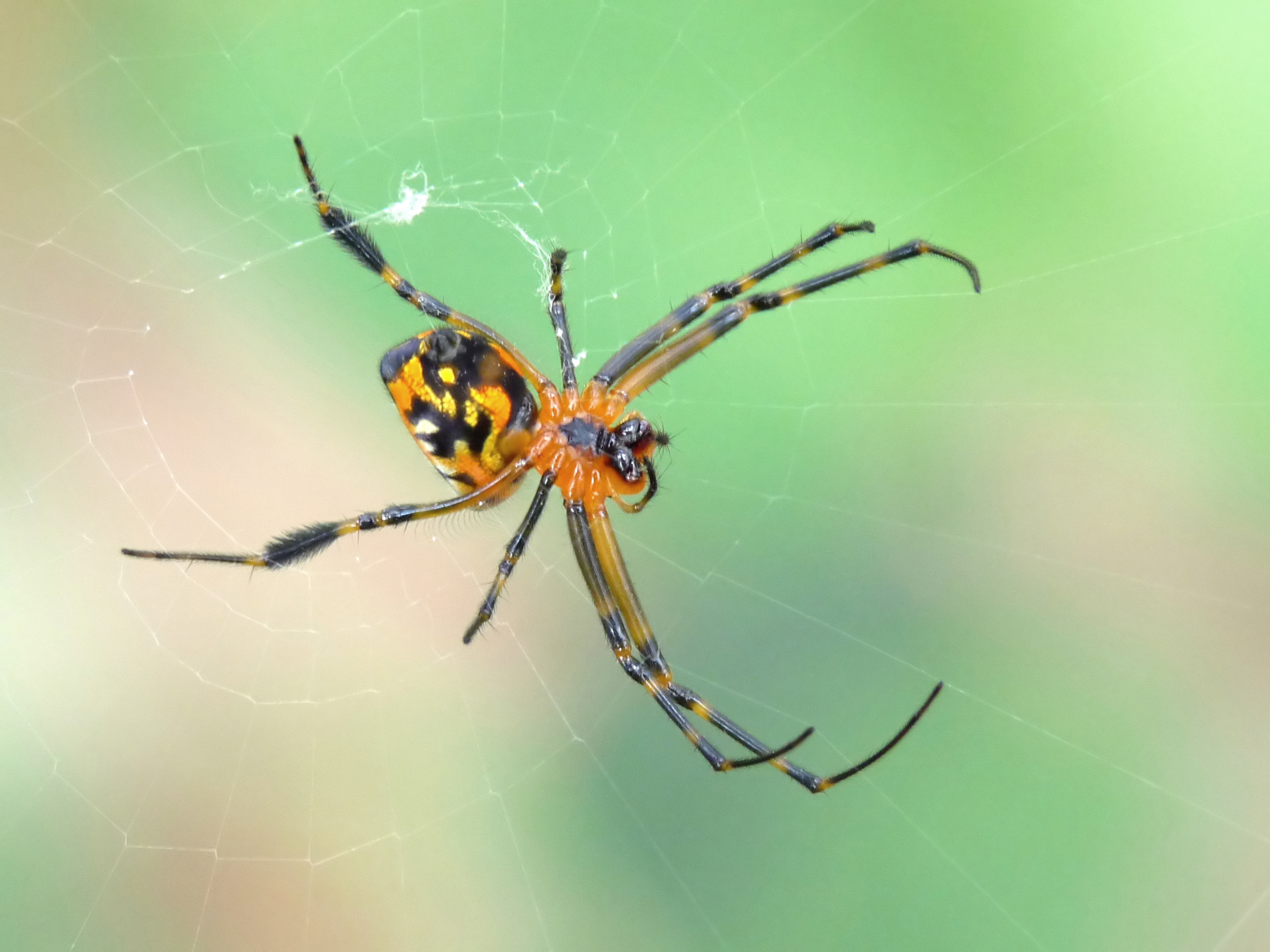|
Tetragnatha Laboriosa
''Tetragnatha laboriosa'', the silver longjawed orbweaver, is a species of long-jawed orb weaver in the spider family Tetragnathidae Long-jawed orb weavers or long jawed spiders (Tetragnathidae) are a family of araneomorph spiders first described by Anton Menge in 1866. They have elongated bodies, legs, and chelicerae, and build small orb webs with an open hub with few, wid .... It is found in North and Central America. References External links * Tetragnathidae Articles created by Qbugbot Spiders described in 1850 {{tetragnathidae-stub ... [...More Info...] [...Related Items...] OR: [Wikipedia] [Google] [Baidu] |
Nicholas Marcellus Hentz
Nicholas Marcellus Hentz (July 25, 1797 – November 4, 1856) was a French American educator and arachnologist. Biography Hentz was born in Versailles, France. He was the youngest child of Charles Nicholas Arnould Hentz and Marie-Anne Therese Daubree Hentz. He studied medicine and learned the art of miniature painting in Paris. His father was an active Republican and participant in the French Revolution. Upon the restoration of the Bourbons in 1815, his father was banished from France. So, in 1816, Marcellus immigrated with his family to the United States, where they settled in Wilkes-Barre, Pennsylvania. He taught French and miniature painting in Boston, Philadelphia, and other places. He became a member of the Academy of Natural Sciences of Philadelphia (ANSP) in 1819. His illustrations were published in their journal. Among these illustrations are three well known watercolors, two of which are of freshwater fish from Alabama (painted in 1847) and one is a miniature of Hentz's ... [...More Info...] [...Related Items...] OR: [Wikipedia] [Google] [Baidu] |
Long-jawed Orb Weaver
Long-jawed orb weavers or long jawed spiders (Tetragnathidae) are a family of Araneomorphae, araneomorph spiders first described by Anton Menge in 1866. They have elongated bodies, legs, and chelicerae, and build small orb webs with an open hub with few, wide-set radii and spirals with no signal line or retreat. Some species are often found in long vegetation near water. Systematics , the World Spider Catalog accepts the following extant genera: *''Alcimosphenus'' Simon, 1895 — Caribbean *''Allende_(spider), Allende'' Álvarez-Padilla, 2007 — Chile, Argentina *''Antillognatha'' Bryant, 1945 — Hispaniola *''Atelidea'' Simon, 1895 — Sri Lanka *''Azilia'' Keyserling, 1881 — United States, Panama, South America, Caribbean *''Chrysometa'' Simon, 1894 — South America, Central America, Mexico, Caribbean *''Cyrtognatha'' Keyserling, 1881 — South America, Central America, Caribbean, Mexico *''Dianleucauge'' Song & Zhu, 1994 — China *''Diphya'' Nicolet, 1849 — Asia, Sou ... [...More Info...] [...Related Items...] OR: [Wikipedia] [Google] [Baidu] |
Spider
Spiders ( order Araneae) are air-breathing arthropods that have eight legs, chelicerae with fangs generally able to inject venom, and spinnerets that extrude silk. They are the largest order of arachnids and rank seventh in total species diversity among all orders of organisms. Spiders are found worldwide on every continent except for Antarctica, and have become established in nearly every land habitat. , 50,356 spider species in 132 families have been recorded by taxonomists. However, there has been debate among scientists about how families should be classified, with over 20 different classifications proposed since 1900. Anatomically, spiders (as with all arachnids) differ from other arthropods in that the usual body segments are fused into two tagmata, the cephalothorax or prosoma, and the opisthosoma, or abdomen, and joined by a small, cylindrical pedicel, however, as there is currently neither paleontological nor embryological evidence that spiders ever had ... [...More Info...] [...Related Items...] OR: [Wikipedia] [Google] [Baidu] |
Tetragnathidae
Long-jawed orb weavers or long jawed spiders (Tetragnathidae) are a family of araneomorph spiders first described by Anton Menge in 1866. They have elongated bodies, legs, and chelicerae, and build small orb webs with an open hub with few, wide-set radii and spirals with no signal line or retreat. Some species are often found in long vegetation near water. Systematics , the World Spider Catalog accepts the following extant genera: *'' Alcimosphenus'' Simon, 1895 — Caribbean *'' Allende'' Álvarez-Padilla, 2007 — Chile, Argentina *'' Antillognatha'' Bryant, 1945 — Hispaniola *''Atelidea'' Simon, 1895 — Sri Lanka *''Azilia'' Keyserling, 1881 — United States, Panama, South America, Caribbean *'' Chrysometa'' Simon, 1894 — South America, Central America, Mexico, Caribbean *'' Cyrtognatha'' Keyserling, 1881 — South America, Central America, Caribbean, Mexico *''Dianleucauge'' Song & Zhu, 1994 — China *''Diphya'' Nicolet, 1849 — Asia, South America, Africa *'' ... [...More Info...] [...Related Items...] OR: [Wikipedia] [Google] [Baidu] |
Tetragnatha Laboriosa Ventral 01
''Tetragnatha'' is a genus of long-jawed orb-weavers found all over the world. It was first described by Pierre André Latreille in 1804, and it contains hundreds of species. Most occur in the tropics and subtropics, and many can run over water. They are commonly called ''stretch spiders'' in reference to their elongated body form and their ability to hide on blades of grass or similar elongated substrates by stretching their front legs forward and the others behind them. The name ''Tetragnatha'' is derived from Greek, ''tetra-'' a numerical prefix referring to four and ''gnatha'' meaning " jaw". Evolution to cursorial behavior occurred long ago in a few different species, the most studied being those found on the Hawaiian islands. One of the biggest and most common species is '' T. extensa'', which has a holarctic distribution. It can be found near lakes, river banks or swamps. Large numbers of individuals can often be found in reeds, tall grass, and around minor trees an ... [...More Info...] [...Related Items...] OR: [Wikipedia] [Google] [Baidu] |


